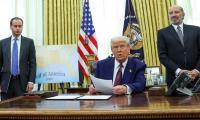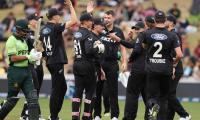the release of missing Baloch persons have been sitting at a camp for four or five hours every day for the many years.
Also, people with disabilities demanding their rights have a camp there for the last few months.
Rehan Ali, a civil society activist, said Regal Chowk in Saddar was also a key venue for political parties, trade unions and civil society groups for organising rallies. However, he added, in the last few years, almost all demonstrations were held outside the KPC.
“A protest at the KPC attracts the media more than the ones at Regal Chowk,” said Ali. “In some cases, protesters try to head towards the Governor’s House located nearby, but are restrained by police.”
‘Preferred’ spots
Besides the KPC, political and sect-based religious parties have their personally ‘designated’ venues in the city, where they stage protests or public gatherings.
Observers say that besides having such locations, sect-based religious parties also have their preferred time for rallies – after Friday prayers.
Shia groups mainly organise protests and sit-ins at the Numaish intersection, because there are key imambargahs nearby.
However, in recent months, Shia groups, especially the Majlis-e-Wahdat-e-Muslimeen have chosen around 10 locations in different parts of Karachi where their sit-ins paralyse the entire city.
Deobandi groups organise their rallies mainly at Guru Mandir, because the Jamia Binoria, their biggest seminary, is in close proximity.
However, the Ahle-Sunnat Wal Jamaat prefers holding its rallies at Nagan Chowrangi outside its office or at the Lasbela Chowk.
For the Jamaat-e-Islami, the preferred location is the Baitul Mukarram mosque on University Road on Fridays. On other days of the week, it also opts for the Globe Roundabout on New MA Jinnah Road, where its Karachi secretariat is located.
Barelvi groups mainly organise their gatherings at Nishtar Park or in Arambagh. The Jamaat-ud-Dawa arranges its rallies near Safari Park on University Road, near its central office.
Political parties, especially the Muttahida Qaumi Movement, use the venue of Tibet Centre on MA Jinnah Road for their major public gatherings. Groups and individuals from Lyari generally organise their protests on Mauripur Road.
Civil society activists say that in recent months, the intersections of Teen Talwar and Do Talwar have become a central location for holding rallies.
Interviews with local residents, shopkeepers and traffic police at Teen Talwar suggest that the Pakistan Tehreek-e-Insaf, which has a significant number of supporters in the posh neighbourhoods of Clifton and Defence, had turned the intersection into hot spot for protests.
“We never saw political gatherings at this intersection before the emergence of the PTI in the city in the last few years,” said a traffic policeman.
After the killing of Sabeen Mahmud, a prominent rights activist and director of The Second Floor, civil society activists had decided to stage an hour-long protest after sunset on every day at Teen Talwar. However, after the ban, they have shifted their protest venue to the Do Talwar intersection.
Citizens’ concerns
Civic rights activists say that protests and public gatherings at the main intersections of the city add to the woes of the citizens in many ways.
Zahid Farooq, an official of the Urban Resource Centre, said to stage a protest or gathering was a fundamental right of any individual or a political party but they should be organised in a way in which residents faced less difficulties.
“Because of frequent protests in different parts of the city at peak rush hours in the afternoon, commuters suffer badly,” Farooq told The News.
He said former mayor Mustafa Kamal had designated some venues at a town-wise level for protests and gathering but the step was not implemented properly.
Recently, Karachi police chief Ghulam Qadir Thebo had suggested the provincial government to designate venues in all districts of the city for staging rallies, pointing out that there were security risks associated with large public gatherings.
Workers washing 300 KWP solar PV system after its installation on December 4, 2022. — APPThe federal government was...
The Sindh High Court building in Karachi. — Facebook@sindhhighcourt.gov.pk/FileThe Sindh High Court has dismissed...
Sindh Police Chief Ghulam Nabi Memon chairs a meeting at the Central Police Office on December 13, 2024. —...
Saylani Welfare International Trust building seen in this image. — saylaniwebproject/FileThe non-profit Saylani...
MOU signing ceremony between the IBA’s Center for Executive Education and the Pakistan Airports Authority’s Civil...
An aerial view of the commercial district of Pakistan's port city of Karachi. — AFP/FileThe Kingdom of...







